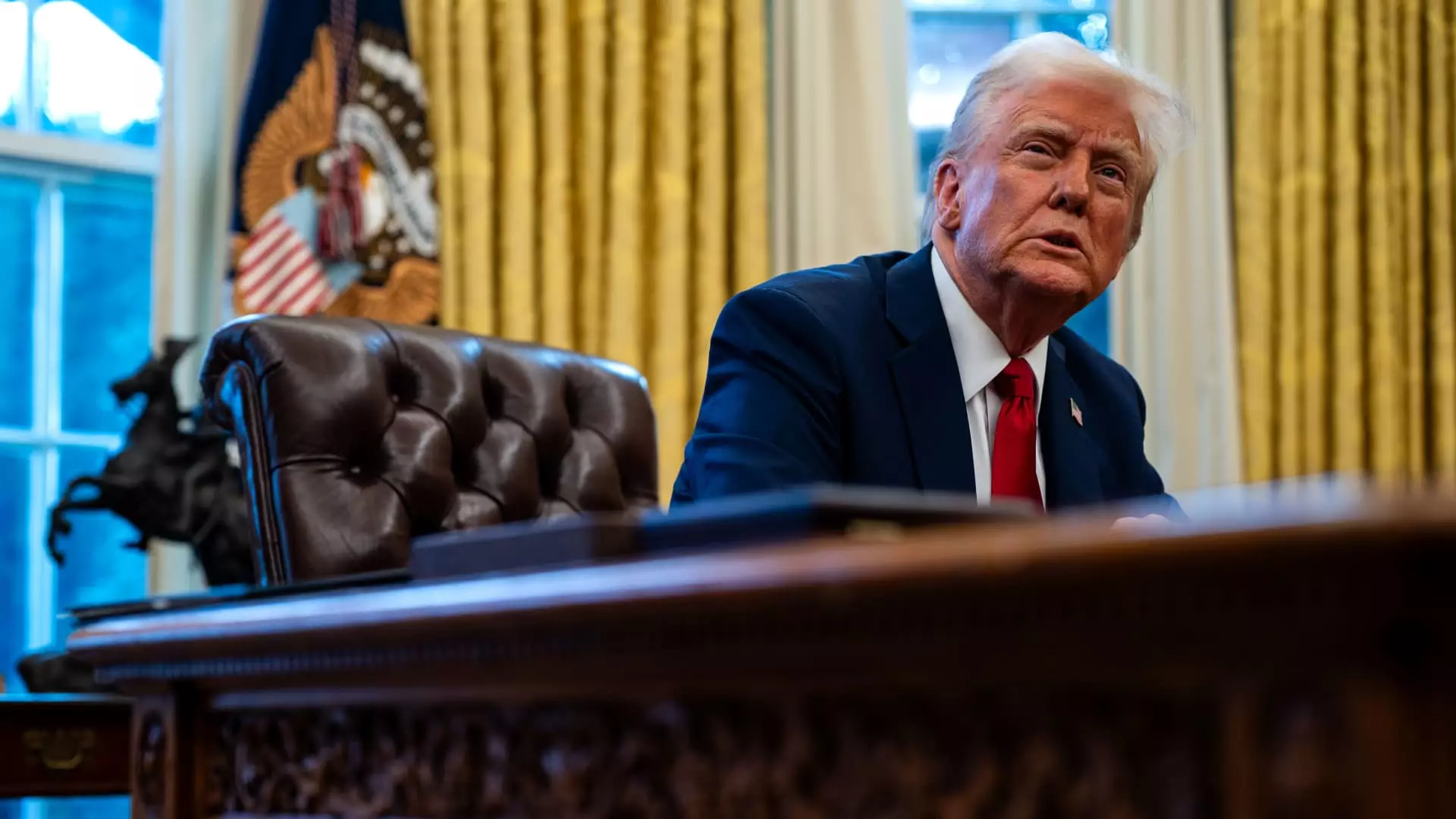In a move that has sparked significant debate and concern, former President Donald Trump announced the implementation of a hefty 25% tariff on imports from both Canada and Mexico, scheduled to take effect on February 1. This decision, reminiscent of his previous aggressive trade policies, aims to address perceived economic imbalances and is being justified by a trifecta of reasons: immigration issues, drug trafficking, and trade deficits. The implications of such tariffs stretch beyond mere numbers; they signal a shift in North American trade dynamics that could have far-reaching effects on consumers, businesses, and the broader economy.
Among the many products that face this tariff, the status of oil imports remains particularly uncertain. Trump indicated that his administration was still deliberating on whether to include oil in this policy, contingent on the pricing strategies of these nations. His comments underline the complexities involved in determining tariff structures, where factors such as geopolitical relations and market stability play critical roles. Notably, Trump’s assertion that “oil is going to have nothing to do with it” reflects his administration’s erratic approach to trade negotiations, raising questions about the strategic underpinnings of such economic decisions.
Trump’s rationale for the tariffs hinges on several contentious issues. He specifically referenced the influx of immigrants and narcotics as primary motivations for imposing tariffs. By framing the issue in these terms, Trump attempts to galvanize support from his base while simultaneously shifting the burden of border security and drug control onto Canada and Mexico. This tactic embodies a protectionist mentality that seeks to remedy domestic societal issues through economic measures. However, critics argue that this approach fails to tackle the root causes of these problems, which are far more complex and require cooperation rather than confrontation.
Reactions from Canada and Mexico
The reaction from Canadian and Mexican officials has been swift and resolute. Both nations have signaled their intention to retaliate against these tariffs, emphasizing that they will respond in kind. For instance, Mexican President Claudia Sheinbaum highlighted that retaliatory measures could lead to increased prices for American consumers, creating a potential backlash against the very populace that Trump aims to protect. Similarly, Canadian Trade Minister Mary Ng remarked that “everything is on the table” regarding potential responses, hinting at possible export taxes that could further complicate U.S.-Canada relations. This tit-for-tat exchange raises concerns about a potential trade war, with devastating consequences for all parties involved.
Potential Economic Impact
The economic ramifications of these tariffs could be profound. Both the Mexican peso and the Canadian dollar showed signs of resilience against the U.S. dollar, recovering from earlier losses. This suggests that markets are cautiously optimistic or perhaps in a state of temporary stabilization as they assess the long-term effects of the tariffs. Nevertheless, economists warn that persistent inflation could become a reality in both Canada and Mexico as prices rise in response to increased tariffs. Consumers in the United States may also feel the pinch, as higher import costs often trickle down and lead to elevated prices for goods and services domestically.
The Larger Context of U.S. Trade Policy
The impending tariffs on Canada and Mexico epitomize Trump’s broader trade agenda, which has frequently oscillated between protectionism and strategic engagement. This duality poses challenges not just for North American relations, but for global trade norms. The focus on tariffs as a tool for negotiating political outcomes raises questions about the sustainability of such an approach, particularly as other economic partners observe these developments. The long-standing belief that tariffs protect domestic jobs and industries is increasingly being scrutinized by economists who caution against their potential to stunt growth and innovation.
As the deadline for these tariffs approaches, it becomes apparent that the consequences of Trump’s economic strategy will unfold in multiple dimensions. For Canada and Mexico, retaliatory actions appear imminent, creating a treacherous path ahead for cross-border trade. In the U.S., consumers may soon face the consequences of higher prices, while the intended economic benefits remain uncertain. Whether this tariff strategy will succeed in achieving its stated objectives or result in unforeseen challenges remains to be seen, but the stakes are undeniably high for the entire North American ecosystem.


Leave a Reply